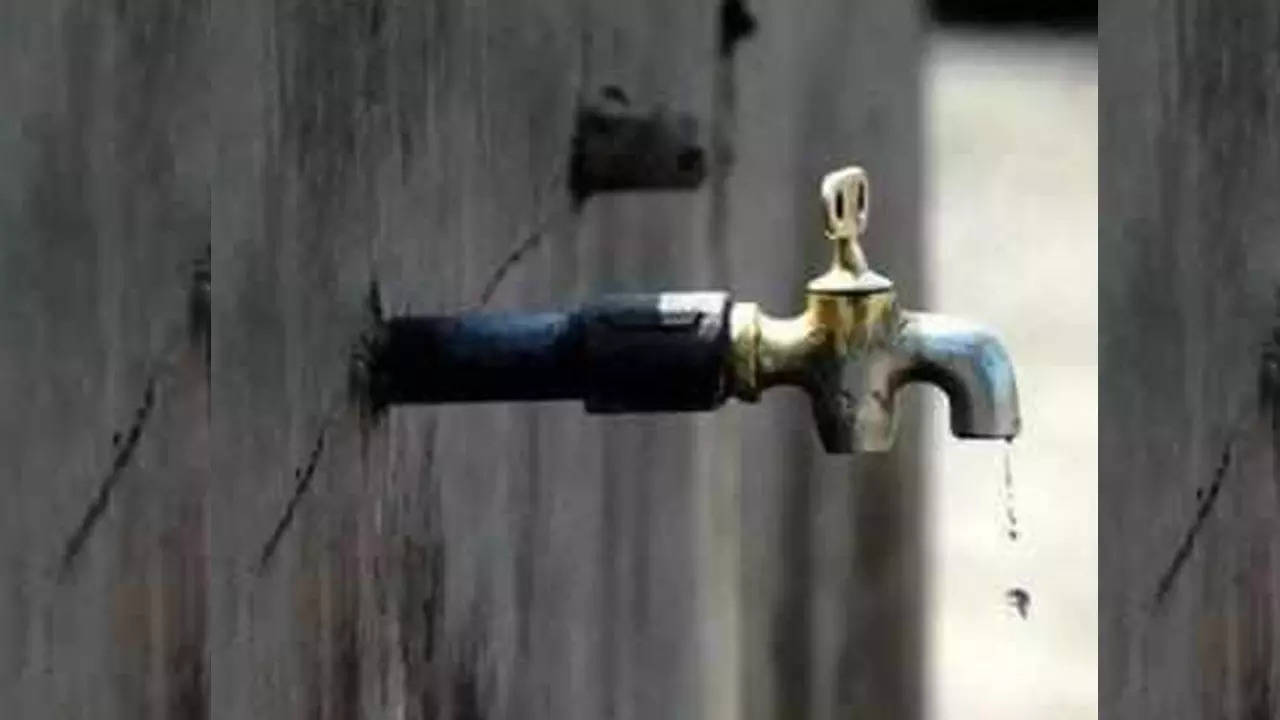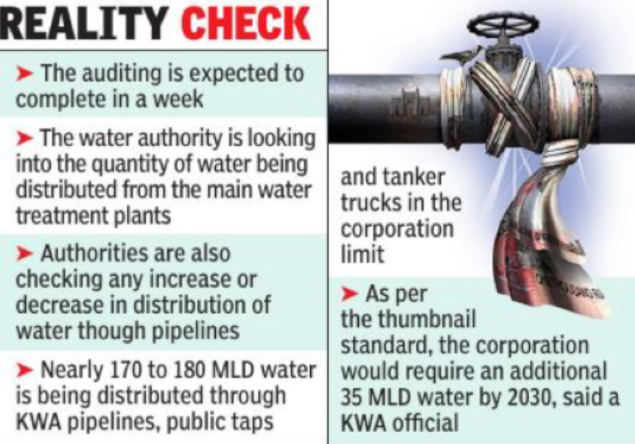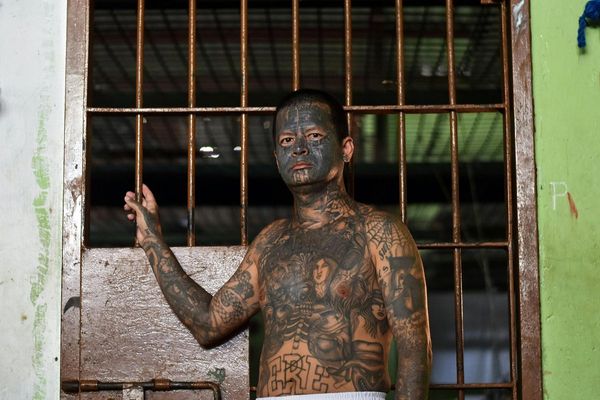
KOCHI: As drinking water shortage hits the district amid soaring mercury, the Kerala Water Authority (KWA) has started a water audit to identify points where people receive more water and where supply is less. The auditing is expected to complete in a week. The move is to examine the water distribution system in the district which experiences water scarcity every summer.
The water authority is also looking into the quantity of water being distributed from the main water treatment plants like the one at Maradu to each area through the main pipelines.

“We are also checking any increase or decrease in distribution of water through pipelines. It has been noted that some areas are receiving more water and some less. We will fix that. Pressure issues in pipelines are also affecting the distribution,” said a KWA official. Water auditing also checks availability of water to each section, whether it is sufficient to meet the demand. Though the authority used to conduct similar auditing earlier, the immediate move on water auditing is following the rising complaints received in KWA offices this summer.
“The auditing is to reduce the supply-demand gap in the district. To distribute more water, the 225 MLD capacity Aluva treatment plant is working overload to meet the shortage,” said a senior KWA official.
Water scarcity has been reported more in the outskirts of the city. As the main pump houses of KWA and commercial establishments are situated in the heart of the city, the latter get more water and residential areas in the peripheral areas do not get adequate water.
Nearly 170 to 180 MLD water is being distributed through KWA pipelines, public taps and tanker trucks to the corporation limit.
“As per the thumbnail rule, 150 litres per capita per day (LPCP) is required for a person per day. However, an average Keralite consumes minimum 350 LPCP going by the living standards. As per the 2011 census, 6.5 lakh population are there in Kochi corporation. The decadal growth is 7.83%. Going by this data, 10.73 lakh projected population will be there in the local body limit by 2030. It includes both the floating and migrant population. As per the thumbnail standard, the corporation will require an additional minimum 35 MLD by 2030,” said the official.
Authorities feel the drinking water shortage issue will be acute by then as the consumption of water by people is more than the benchmark.







